The GPCode Ransomware is a threat that occurs on a .TXT file named “how to get data.txt” in appearance. According to our malware researchers creates this file in the encryption process, so this is probably the first signs of infection. When you consider that these Ransomware damaged lot files using the AES algorithm, you might find the encrypted files of course first. It was noted that this threat even in the situation is to encrypt .exe files, which means that malware scanner, anti-malware software, Web browser and other applications that are not up to date, could also be disabled. Fortunately, you can replace these files. If you can replace your personal files or not, depends on whether you have a backup of it. If you have a backup of your files, you have to worry only about, how you can delete the GPCode Ransomware. If your files are not backed up, you have a problem, you can not possibly escape.
Once the files are been encrypted by the GPCode Ransomware, you will get the extension “.” LOL!” (or in some cases, “OMG!”). These are those files that you can no longer open, and then the file “how to get data.txt” follows them. This file in every folder and subfolder contains encrypted files should be copied according to our analysis. It was also noted that this file startup (which can be found in %APPDATA%\Microsoft\Windows\Start Menu\Programs\Startup) is added, which is why the file is displayed when you restart your computer. You can find them on the desktop. It is not dangerous, this file to open, which is why you should fear not. You must however be careful as regards the information contained in the TXT file. If you read the release and blindly follow all claims, you could stand at the end without a solution for your files and without your money.
The main reason, from which the GPCode Ransomware was created, is to raise money. The creators of the Ransomware offers a useful service, nor a useful product, but he can earn money be very successful. If you have analyzed the file “how to get data.txt”, you will know that you have to pay money in Exchange for a decryption program. This means that the creators of malicious GPCode Ransomware takes your files simply as a hostage to make money. Unfortunately, the decryption program is (known also as the decryption key), the only tool that can help you can restore your files, be it because of course, you have a backup of your files. Even if you remove the Ransomware or the extensions that have been appended to the files, you will determine that your photos, documents and other sensitive files remain locked. Unfortunately, we don’t know how the cybercriminals you ask much, because the ransom is announced every single victim when there is a communication on gpcode@gp2mail.com.
What happens if you pay the ransom, which is required by the GPCode Ransomware? Now, there are only two ways in which this might take place. If you’re lucky, you get a functional “decryptor”, after you have sacrificed your money. If the cybercriminals choose another lesson to teach – and consider encrypting your files as a lesson – you sacrifice your money in Exchange for nothing. There is no doubt that you will lose your money if you decide to pay the ransom is all in all. You can’t know whether this sacrifice will bring something you, but you must remember that you could lose your money for no reason if you follow the demands of unpredictable cybercriminals.
As you can see, there are a few steps you need to take to remove the GPCode Ransomware from your operating system. Keep in mind that the infection may be even deletes after completing the encryption of your files and the file has created “how to get data.txt”. Some users let these Ransomware by opening fake spam E mail attachments, in which case it should be not difficult to delete the culprit. If you are not able to manually clean your operating system, use an automatic malware remover. First transfer the installer of browser (if your browser is also encrypted) from a time-ware-free computer. Install the browser and then install a trusted anti-malware software.
Delete the GPCode Ransomware
Warning, multiple anti-virus scanners have detected possible malware in GPCode Ransomware.
| Anti-Virus Software | Version | Detection |
|---|---|---|
| McAfee | 5.600.0.1067 | Win32.Application.OptimizerPro.E |
| Kingsoft AntiVirus | 2013.4.9.267 | Win32.Troj.Generic.a.(kcloud) |
| K7 AntiVirus | 9.179.12403 | Unwanted-Program ( 00454f261 ) |
| Malwarebytes | 1.75.0.1 | PUP.Optional.Wajam.A |
| NANO AntiVirus | 0.26.0.55366 | Trojan.Win32.Searcher.bpjlwd |
| Dr.Web | Adware.Searcher.2467 | |
| VIPRE Antivirus | 22702 | Wajam (fs) |
| Baidu-International | 3.5.1.41473 | Trojan.Win32.Agent.peo |
| McAfee-GW-Edition | 2013 | Win32.Application.OptimizerPro.E |
| Tencent | 1.0.0.1 | Win32.Trojan.Bprotector.Wlfh |
| VIPRE Antivirus | 22224 | MalSign.Generic |
| ESET-NOD32 | 8894 | Win32/Wajam.A |
| Malwarebytes | v2013.10.29.10 | PUP.Optional.MalSign.Generic |
| Qihoo-360 | 1.0.0.1015 | Win32/Virus.RiskTool.825 |
GPCode Ransomware Behavior
- Distributes itself through pay-per-install or is bundled with third-party software.
- Integrates into the web browser via the GPCode Ransomware browser extension
- Changes user's homepage
- Shows Fake Security Alerts, Pop-ups and Ads.
- Modifies Desktop and Browser Settings.
- GPCode Ransomware Connects to the internet without your permission
- GPCode Ransomware Shows commercial adverts
- Steals or uses your Confidential Data
GPCode Ransomware effected Windows OS versions
- Windows 10
- Windows 8
- Windows 7
- Windows Vista
- Windows XP
GPCode Ransomware Geography
Eliminate GPCode Ransomware from Windows
Delete GPCode Ransomware from Windows XP:
- Click on Start to open the menu.
- Select Control Panel and go to Add or Remove Programs.
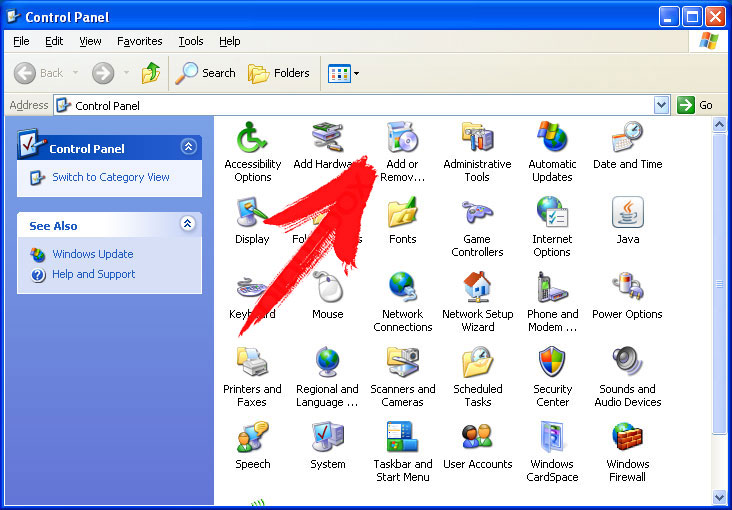
- Choose and remove the unwanted program.
Remove GPCode Ransomware from your Windows 7 and Vista:
- Open Start menu and select Control Panel.
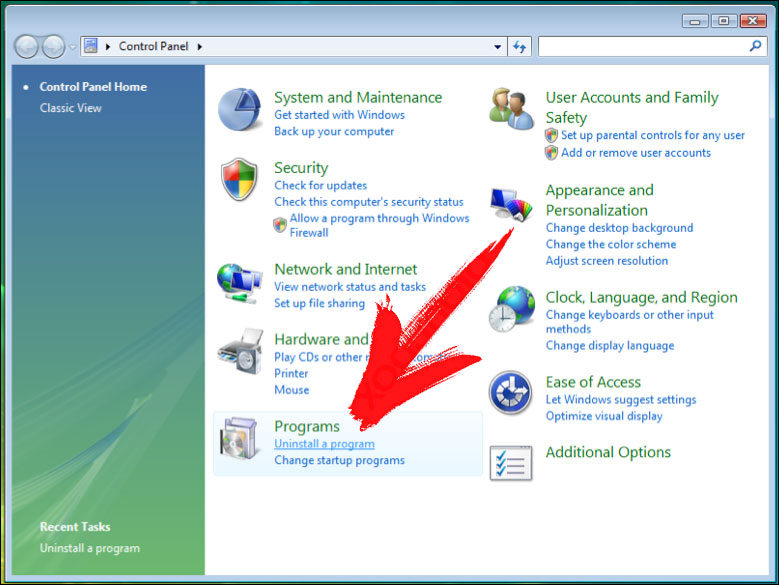
- Move to Uninstall a program
- Right-click on the unwanted app and pick Uninstall.
Erase GPCode Ransomware from Windows 8 and 8.1:
- Right-click on the lower-left corner and select Control Panel.
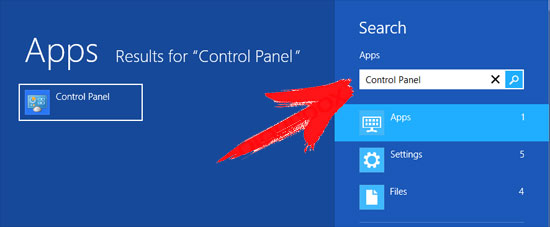
- Choose Uninstall a program and right-click on the unwanted app.
- Click Uninstall .
Delete GPCode Ransomware from Your Browsers
GPCode Ransomware Removal from Internet Explorer
- Click on the Gear icon and select Internet Options.
- Go to Advanced tab and click Reset.
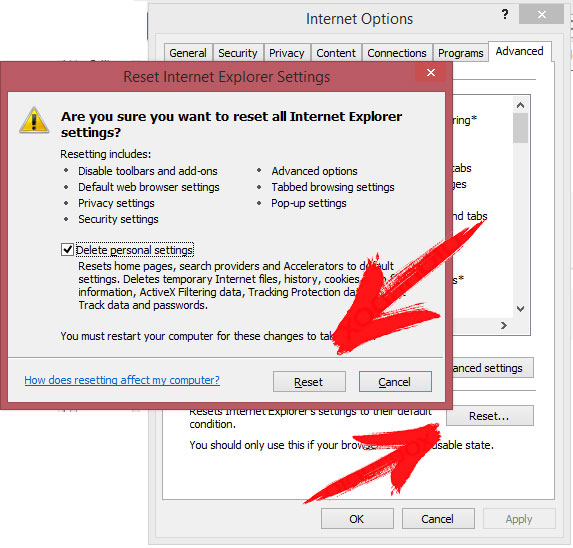
- Check Delete personal settings and click Reset again.
- Click Close and select OK.
- Go back to the Gear icon, pick Manage add-ons → Toolbars and Extensions, and delete unwanted extensions.
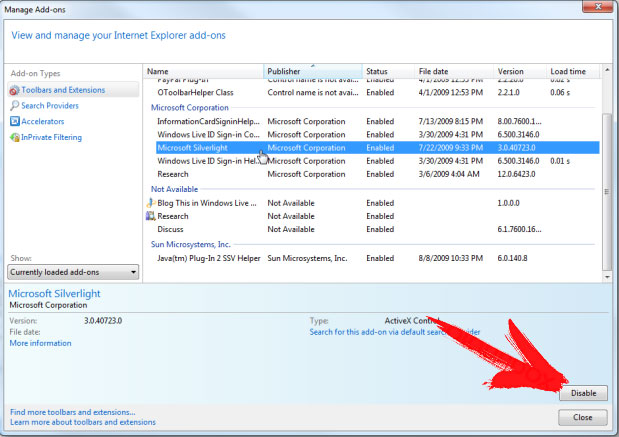
- Go to Search Providers and choose a new default search engine
Erase GPCode Ransomware from Mozilla Firefox
- Enter „about:addons“ into the URL field.
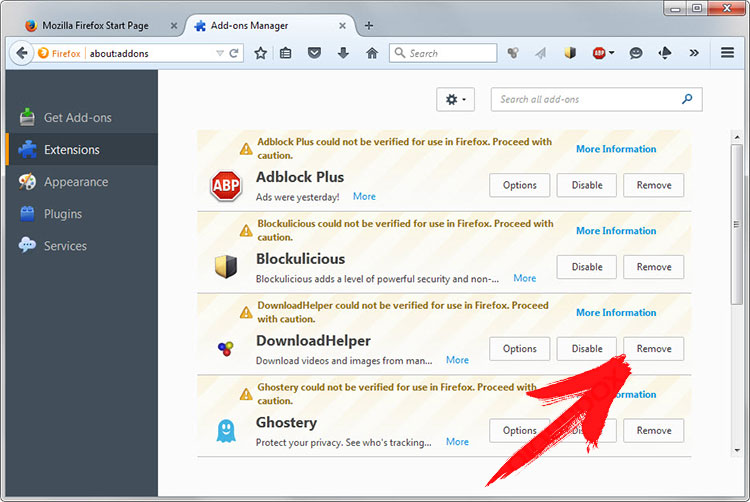
- Go to Extensions and delete suspicious browser extensions
- Click on the menu, click the question mark and open Firefox Help. Click on the Refresh Firefox button and select Refresh Firefox to confirm.
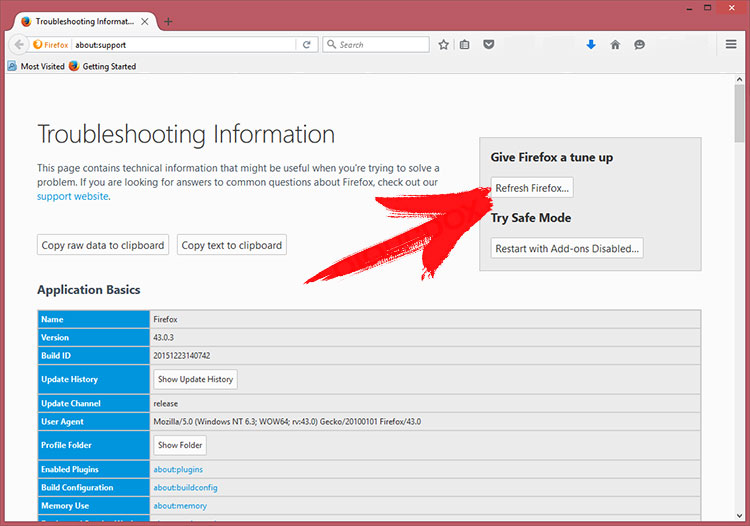
Terminate GPCode Ransomware from Chrome
- Type in „chrome://extensions“ into the URL field and tap Enter.
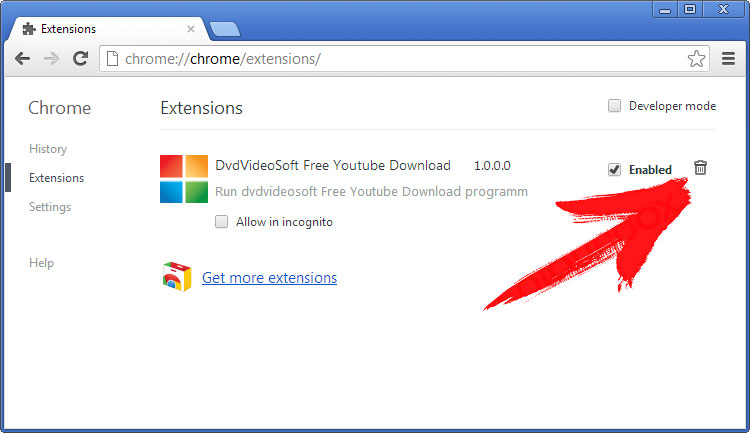
- Terminate unreliable browser extensions
- Restart Google Chrome.
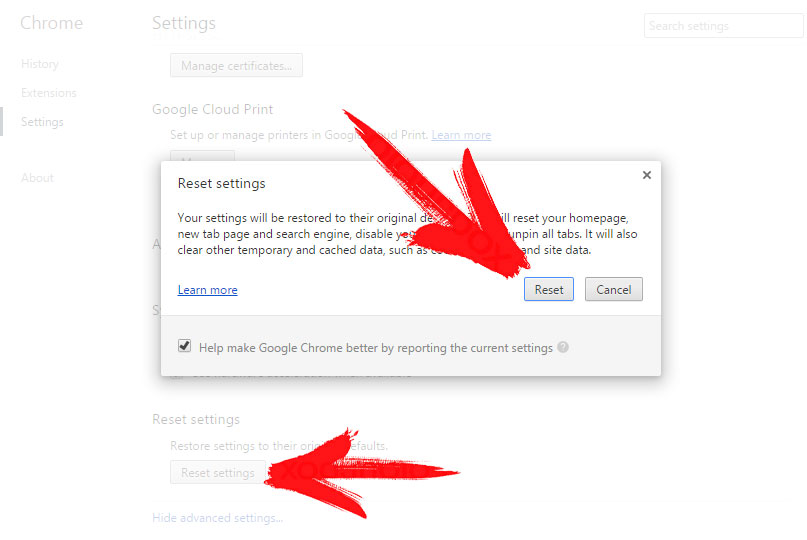
- Open Chrome menu, click Settings → Show advanced settings, select Reset browser settings, and click Reset (optional).